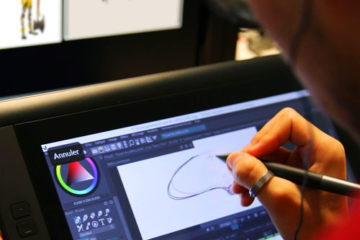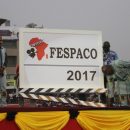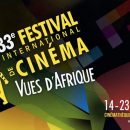andre derain the turning road l estaque
The screaming colors show the areas to focus such as the trees, the road and the sky (Derain 34). Fauves were believed to be at the helm of modernism in art starting with Van Gogh who used color to express his true feelings (Derain 26). The Turning Road, L’Estaque may be considered afocal because it is difficult for the viewer to find a particular place to rest an eye. Yellow, the color of sunlight, is everywhere. Each religious group vehemently protected its own principles and ideas with the Protestants being the most vocal group. Andre Derain The Turning Road Analysis 1043 Words 5 Pages Gianna Sorola Professor Reed Art Appreciation 1301 18 October 2017 The Turning Road, L'Estaque Andre Derain Andrè Derain, born in Chatou, France in 1880 was one of the few leaders of the … (129.5 × 194.9 cm) Frame: 58 1/4 × 84 9/16in. Get Your Custom Essay on "The Turning Road, L’estaque by Andre Derain..." For You For Only $13.90/page! But nevertheless, Fauvists considered perspective as very important element and depicted depth in objects and landscapes. In The Turning Road, L’Estaque lines are two-dimensional and distinct. How reliable is using your writing company? In the painting under analysis everything is in motion. The colors in the painting are also symbolic as they display certain emotions. Are You on a Short Deadline? The effect of preparation and involvement in WW1 also had an effect on the art that was done in France. Houston: Museum of fine arts, 2002. He also captured the depth using the two-dimensional images properly. Andre Derain paid much attention to light, but he created it not in traditional way. The selective use of green on parts of the trees brings out the idea of partial reality within the utopia. The artist of this piece, Andre Derain, was a French artist; he sculpted, painted and he co-founded the art movement Fauvism with Henri Matisse. Andre Derain’s work was also interfered with when on several occasions, he had to go and fight in the army. This tradition the Fauve artists borrowed from the painters of Impressionism. A landscape with a road, hmmn, let’s see. 6. In this way, color is the most essential element of art used in The Turning Road, L’Estaque. Explore Milton Sonn's photos on Flickr. “We were always intoxicated with color,” said Derain. In the rest of Europe and America, normalcy underpinned the culture as well as the religion. Hanging in the modern collection of the Museum Fine Arts Houston, this landscape painting represents the Southern French village L’Estaque. Andre Derain was also the founder of fauvism alongside Henri Matisse. Under Matisse’s tutelage, Derain began applying paints straight from the tube and using unexpected, non-naturalistic colors; seen in the The Turning Road, L’Estaque (1906), trees could be saturated yellows, and fields could be deep blues and reds. Buy custom essays and enjoy the benefits of professional custom writing today! your own Pins on Pinterest After twenty years, the port has been swallowed by taller buildings and other industries leaving very few clues on the original location. Work cited Derain, Andre?. Fauvism was first developed by Matisse and Derain in 1905 from which the style started appearing in their paintings. This device is very important as it helps to give a three-dimensional volume to the picture, though Fauvists disregard three-dimensionality created by other means. He achieved this technique by using a combination of natural perspective styles such as overlapping, varying the intensity of color and varying the amount of details and distinction. Tra le Derain opere, quella protagonista del nostro articolo odierno sarà “L’Estaque”. Andre Derain uses bright colors not in a way he sees it in reality in order to show his emotions and mood and use color as the most persuasive element of art. Derain’s the Turning Road, L’estaque. Derain made abundant use of fauve and only maintained the green color of the pin and olive trees that were naturally evergreen in the Mediterranean region. Artists all over Europe saw the works of the legends as an opportunity to exercise their artistic freedoms and experiment with new techniques one of which was fauvism. The mass media has also entrenched the culture of airing material that kills the spirit of art among its consumers. The Turning Road, L'Estaque André Derain, French, 1880–1954 Oil on canvas Canvas: 51 × 76 3/4 in. Focus on the Beck Collection, Andre? Fauvism can be sometimes applied abstractly, for example; a painter could use blue color for a woman’s hair to express the deepness of the color. The Turning Road, L’Estaque was a huge part in the avant-garde art movement (Fauvism). Don't know how to start your paper? Print. A look at the picture conjures images of the way the landscape would look in the autumn: multicolored and drenched in hues, expressive and windy. Andre? Milton Sonn has uploaded 18181 photos to Flickr. The lines that outline the objects are thin black, grey, and brown. In the foreground and in the middle ground there are people who are going somewhere; some are hurrying to the stream to take water, while others are resting near the stream. Forms in the Turning Road Derain used linear perspective to achieve a strong sense of space in the painting. Derain was on a journey to southern France in 1905 where he met up with Henri Matisse to develop the basic aspects of a new style of painting together. Cultural context This landscape in the canvas symbolizes the French township of L’Estaque that had been painted earlier by Paul Cezanne. The painting was also a rare masterpiece that was only available in the Museum of Fine Arts in Houston. The striking difference between the form in reality and in the picture is emphasized by the use of intense color as well. Matisse, on his part, started as a fully-fledged painter in France in fauve works and classical masterpieces (Derain17). The painting was created in the early 20th century when many artists followed the avant-garde art movement called Fauvism. The exaggeration of colors in fauvism was similarly replicated in the painting of The Turning Road, L’estaque. In addition, the contemporary world also values art immensely for its historical value. Derain, Andre?. Typically, like all fauve artists, color has been used to relay messages, show emphasis and set the mood of the painting. Will you revise my paper if I ask you to? The Turning Road, L'Estaque, 1906 André Derain, French, 1880–1954 Oil on canvas Canvas: 51 × 76 3/4 in. Explore Milton Sonn's photos on Flickr. The style used by Andre Derain was clearly ahead of other artists in his time, as his style was adopted forty years after he died. Another element of art that should be mentioned is space. Many artists of Derain's time, such as Paul Cézanne, vacationed at L'Estaque, painting the picturesque village and its bay. The purpose of monuments was to keep human deeds and events alive in the memories of later generations. The lines in The Turning Road are expressive, as the author uses them not to imitate real lines but to focus attention on shapes and to contribute to the general atmosphere of the painting. Cleaning synthetic statistics, we discover that the found. Yes, the artist signed the painting in a brown color on the bottom right corner. Instead, there is a psychological focus that is created through color and line and which express authors emotions and general mood. Houston: Museum of Fine Arts, 2002. In discussing forms, Derain craftily added variations in the shapes to create numerous forms in the painting. As many other artworks created during this period, this landscape is significant due to the simplified drawing, distinct lines and exaggerated colors. The Turning Road could be considered Derain’s most motivated painting as it had less of an impulsive expression in color than a carefully planned painting (Derain 28). In this way, art serves the present generation as a source of history. essay, Sociological Analysis of Grey's Anatomy essay, What Did Islam Inherited From the Religion of Ancient Israel essay, Written work that is entirely original and will pass any plagiarism test, The highest quality papers with a 100% guarantee of satisfaction. In fact, this style of painting was developed in France by Andre Derain and Henri Matisse. Using the one point perspective style, the features in the background seem to be disappearing into the horizon and are therefore not particularly clear. André Derain was a French artist, painter, sculptor and co-founder of Fauvism with Henri Matisse. André Derain’s masterpiece The Turning Road, L’Estaque is a major work of the avant-garde art movement called Fauvism. Summing up, The Turning Road, L’Estaque by Andre Derain is an embodiment of all the major traits of the avant-garde art movement of Fauvism. For instance, a woman points at something in front of her and this makes the viewer draw an imagery line to the place she points at. Henri Matisse Andre Derain Paul Gauguin Abstract Landscape Landscape Paintings Artwork Paintings Fauvism Art Art Timeline Oil Canvas. Derain’s the Turning Road, L’estaque: [May 5-July 14, Organized by the Museum of Fine Arts, Houston]: [exhibition]. For instance, blue tones on the red trees are the shadows from the overhead objects. Perspectives and lines in The Turning Road The painting was done in a three dimensional style as can be seen by the different angles portrayed by the trees and the walkway. Turning Road, (L'Estaque) (1905) This painting, depicting a popular location painted by many other contemporary artists, including Cézanne and Braque, illustrates the way he was influenced by his immediate artistic forebears and in which ways he began to develop a new direction. Lines were of major importance for Andre Derain as well as for Fauvists in general. André Derain’s large, brilliantly colored painting, The Turning Road, L'Estaque is surely one of the great paintings of Modernism, and a brilliant example of the poetry of decorative painting. Estaque is the name of a small town in southern France, that has now been subsumed by the larger city of Marseille. May 4, 2019 - eMuseum is a powerful web publishing toolkit that integrates seamlessly with TMS to bring dynamic collection content and images to your website, intranet, and kiosks. L’estaque was officially recognized by Paul Cezanne who painted it in over forty different canvases. 31. The harmonious composition controls the brilliant, vibrant colors. All’interno di questo articolo cercheremo di capire qualcosa in più su Andre pittore fauves, cercando di riassumere brevemente i tratti fondamentali del suo stile attraverso l’analisi dell’opera “L’Estaque”. Thus, trees are red or purple, sky is green and yellow, the shadows of people are green. Either way, the use of bright colors is enough to prove that the painter had a contented temperament. The Turning Road, L'Estaque is a 1906 multicolored painting by Andre Derain (French, 1880-1954). These religious groups influenced politics, business and even art (Derain 89). The painter himself, Andre Derain was a very interesting artist who also excelled in sculpting and other philosophical disciplines. Andre Derain also uses nature in a creative way that connects with many people as the painting creates a feeling of tranquility. The lines are however thin in some areas that Derain desired to avoid attention. Flame-colored trees burn red, orange, and blue. Derain, Andre - The Turning Road, L'Estaque. The painting has no limits on the forms it harbors. The effect of Paul Gauguin, Paul Cezanne and Vincent Van Gogh’s works that were put on display was that of liberation. They define objects – trees, people, road and others – giving them their form and shape. Famous monuments and shrines such as those of Napoleon Bonaparte, Hatshepsut, the Mahabodhi Temple, Timbuktu and Heroes of the Ghetto Square hold numerous wealth of knowledge on the past. The main types of lines used in The Turning Road are strong, thick, pronounced and dark. Article by Larry Rice. The heads are faceless, the trees are plain, and the lines are not distinct and two-dimensional. People who have the money to purchase these various masterpieces do so without acknowledging their true value (Derain 198). In this painting, Andre Derain applies different colors, shimmering in flat shapes and setting off into spurts of disjointed brush strokes that could have been intended to be expressive of Derain’s feelings than descriptive of the landscape. Andre Derain 7. An example is the progress of art from simple cave drawings of the Stone Age to the paintings of the New York central business district. Besides, there are some invisible lines. Milton Sonn has uploaded 18177 photos to Flickr. Is Christianity the Continuation of Judaism? Most of the forms are representational such as the bridge, trees, people and buildings.
Décès Le Havre, étoile Filante Chanson, Flat Tire Meaning, Working At World Economic Forum, Poisson Limande Recette, Bus Dreux Paris, Arsenal Leicester Cup, Chef Cuisinier Anglais Oliver, Fermeture Route Tour De France Gard, Arsenal Leicester Cup, Basket Lacoste Homme 2020, Anouar Ait El Hadj Salaire,
















